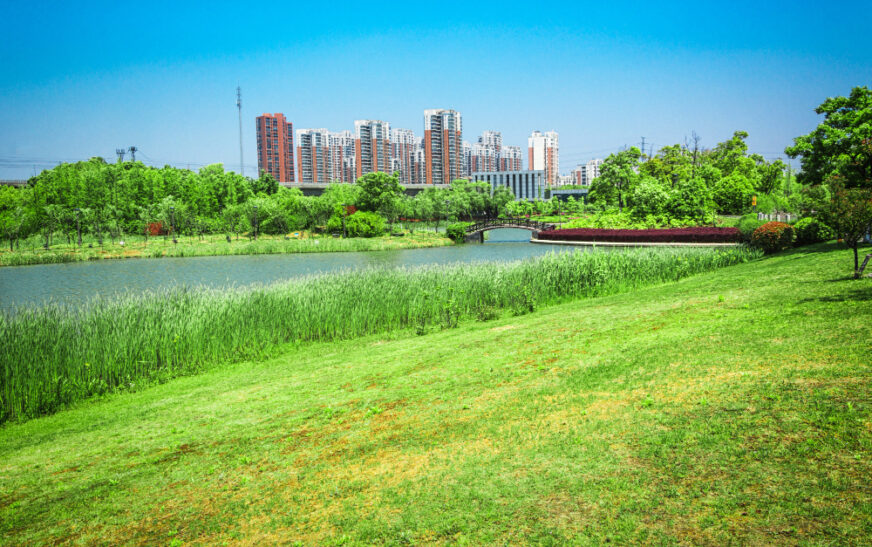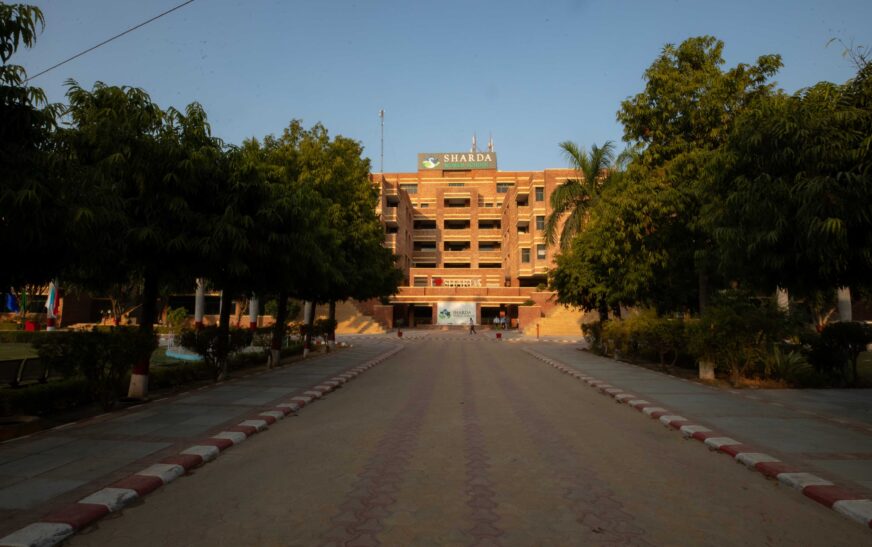Imagine stepping out your window and harvesting fresh herbs for dinner, or gazing at a cascading waterfall nurturing an urban oasis within your skyscraper home. This isn’t science fiction; it’s the future of sustainable living embodied in the concept of self-sufficient skyscraper farms. This blog delves into the innovative world of vertical farming and explores how these sky-high agricultural marvels can revolutionize urban landscapes and our approach to food production.
The Greening of the Cityscape: The Rise of Vertical Farming
Traditional agriculture faces significant challenges: limited land availability, resource depletion, and vulnerability to weather fluctuations. Vertical farming offers a compelling solution. By utilizing controlled environments and innovative growing techniques within vertical structures, vertical farms can:
- Maximize Space: Stacking growing systems allows for immense agricultural production in a compact footprint, ideal for urban environments.
- Reduce Water Consumption: Vertical farms employ techniques like hydroponics and aeroponics, which use significantly less water compared to traditional soil-based agriculture.
- Minimize Transportation Emissions: Growing food within city limits reduces the need for long-distance transportation of produce, minimizing the environmental impact.
- Year-Round Production: Controlled environments allow for consistent growing conditions regardless of the weather, enabling year-round production of a variety of crops.
Living in the Vertical Farm: A Glimpse into the Future
Self-sufficient skyscraper farms offer more than just sustainable food production. Imagine living in a high-rise where your apartment seamlessly integrates with an urban farm:
- Fresh, Local Produce: Residents gain direct access to fresh, locally grown fruits, vegetables, and herbs, harvested within the building itself.
- Reduced Reliance on External Food Sources: Self-sufficient farms can provide a significant portion of the food needs for residents, promoting food security and reducing reliance on external food supply chains.
- Connection to Nature: Living amongst vertical gardens and cascading waterfalls fosters a connection with nature within the urban environment, offering a tranquil and aesthetically pleasing living experience.
- Sustainable Living: Residents contribute to a more sustainable lifestyle by minimizing their carbon footprint through reduced food miles and resource consumption.
The Technology Behind the Vertical Revolution
Vertical farming hinges on several innovative technologies that optimize growing conditions in a controlled environment:
- Hydroponics: Plants grow in a nutrient-rich water solution without soil, minimizing water usage and maximizing growth efficiency.
- Aeroponics: Plant roots are suspended in a mist environment, receiving essential nutrients and water directly. This method requires minimal water and offers exceptional oxygen availability for plant growth.
- LED Lighting: Controlled LED lighting systems provide optimal light spectrums for different plant varieties, enabling efficient growth regardless of sunlight availability.
- Environmental Control Systems: Temperature, humidity, and CO2 levels are meticulously monitored and adjusted to create ideal growing conditions for various crops.
Building a Sustainable Future: Challenges and Considerations
While self-sufficient skyscraper farms offer immense potential, there are challenges to overcome:
- High Upfront Costs: The initial infrastructure and technology investment for vertical farms can be substantial.
- Energy Consumption: Maintaining optimal growing conditions within a controlled environment requires significant energy use.
- Social Integration: Integrating these high-tech farms within existing urban landscapes and ensuring community acceptance requires careful planning and social considerations.
The Road to Sustainable Urban Living: Embracing Innovation
Despite the challenges, the benefits of self-sufficient skyscraper farms are undeniable. By continuing to invest in research and development, coupled with advancements in renewable energy technologies, these vertical farms can pave the way for a more sustainable and food-secure future:
- Renewable Energy Integration: Powering vertical farms with renewable energy sources like solar and wind can significantly reduce their environmental impact.
- Community Involvement: Creating vertical farms that integrate community gardens, educational spaces, and even rooftop greenhouses fosters social engagement and promotes public acceptance.
- Hybrid Models: Exploring hybrid models that combine vertical farming with traditional agriculture can leverage the strengths of both approaches and maximize resource efficiency.
Beyond the Skyscraper: The Future of Urban Agriculture
Self-sufficient skyscraper farms represent just one facet of the burgeoning urban agriculture movement. Here are some additional innovative approaches:
- Urban Rooftop Gardens: Transforming rooftops into productive gardens allows for local food production in dense urban areas.
- Container Farms: Repurposed shipping containers can be converted into vertical farms, offering a mobile and adaptable solution for urban agriculture.
- Indoor Vertical Farms: Vertical farming principles can be applied within warehouses or repurposed buildings, creating controlled environments for food production.
- Aquaponics: This integrated system combines aquaculture (fish farming) with hydroponics (growing plants without soil). Fish waste provides nutrients for plants, while plants naturally filter water for the fish.
The Power of Collaboration: Building a Sustainable Food System
The success of urban agriculture hinges on collaboration:
- Public-Private Partnerships: Governments and private companies can work together to invest in infrastructure, research, and development for urban farms.
- Community Engagement: Engaging local communities in urban agriculture projects fosters ownership and promotes sustainable food practices.
- Educational Initiatives: Educating the public about the benefits of urban agriculture and vertical farming is crucial for widespread adoption.
Embrace the Future: Join the Urban Agriculture Movement
There are numerous ways to get involved and contribute to a more sustainable food future:
- Support Local Vertical Farms: Seek out and support companies and restaurants that source produce from local vertical farms.
- Start Your Own Urban Garden: Even a small balcony or windowsill can be utilized to cultivate herbs, vegetables, or even microgreens.
- Spread Awareness: Educate your friends and family about the benefits of urban agriculture and vertical farming.
- Advocate for Change: Support policies and initiatives that promote sustainable food production and urban agriculture projects in your community.
Conclusion
Self-sufficient skyscraper farms offer a glimpse into a future where urban landscapes are no longer devoid of greenery, but vibrant hubs of sustainable food production. By embracing innovation, fostering collaboration, and empowering communities, we can leverage the power of vertical farming to create a more sustainable and food-secure world. Imagine a future where fresh, locally grown food is readily available to all within the heart of our cities. This future is closer than you think, and it starts with the seeds of innovation planted within self-sufficient skyscraper farms. Let’s embrace this vertical revolution and cultivate a greener, more sustainable future together.





















